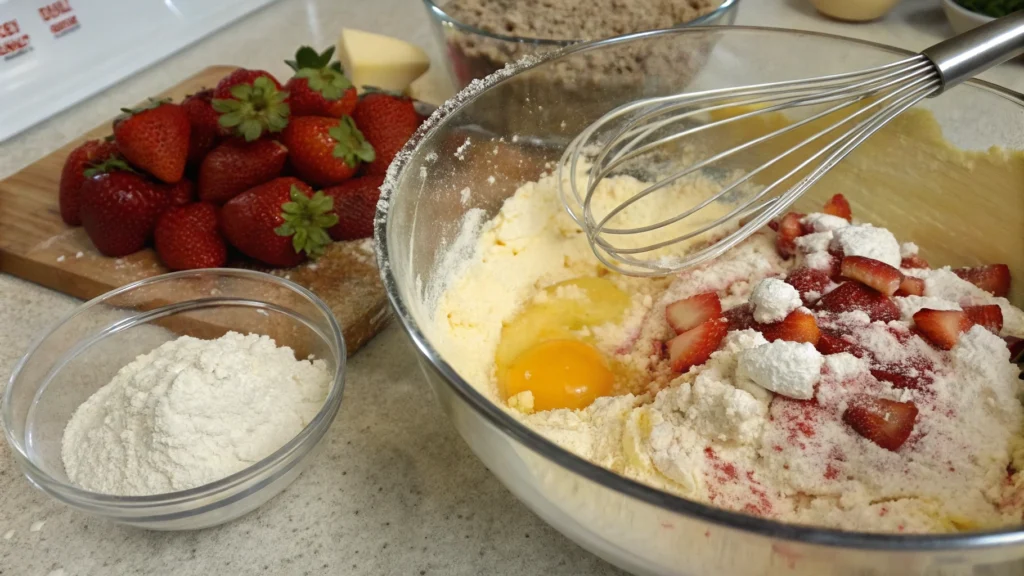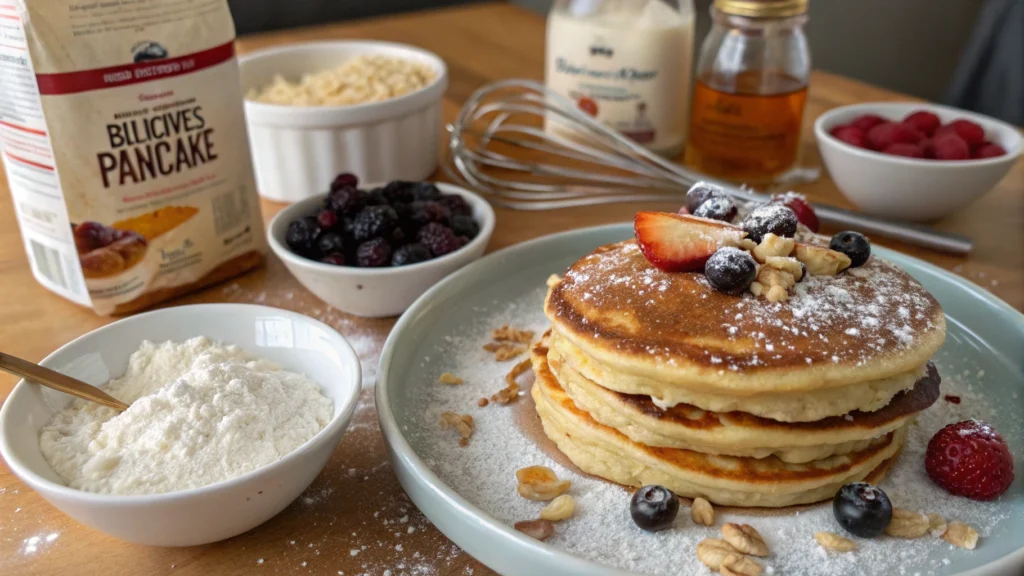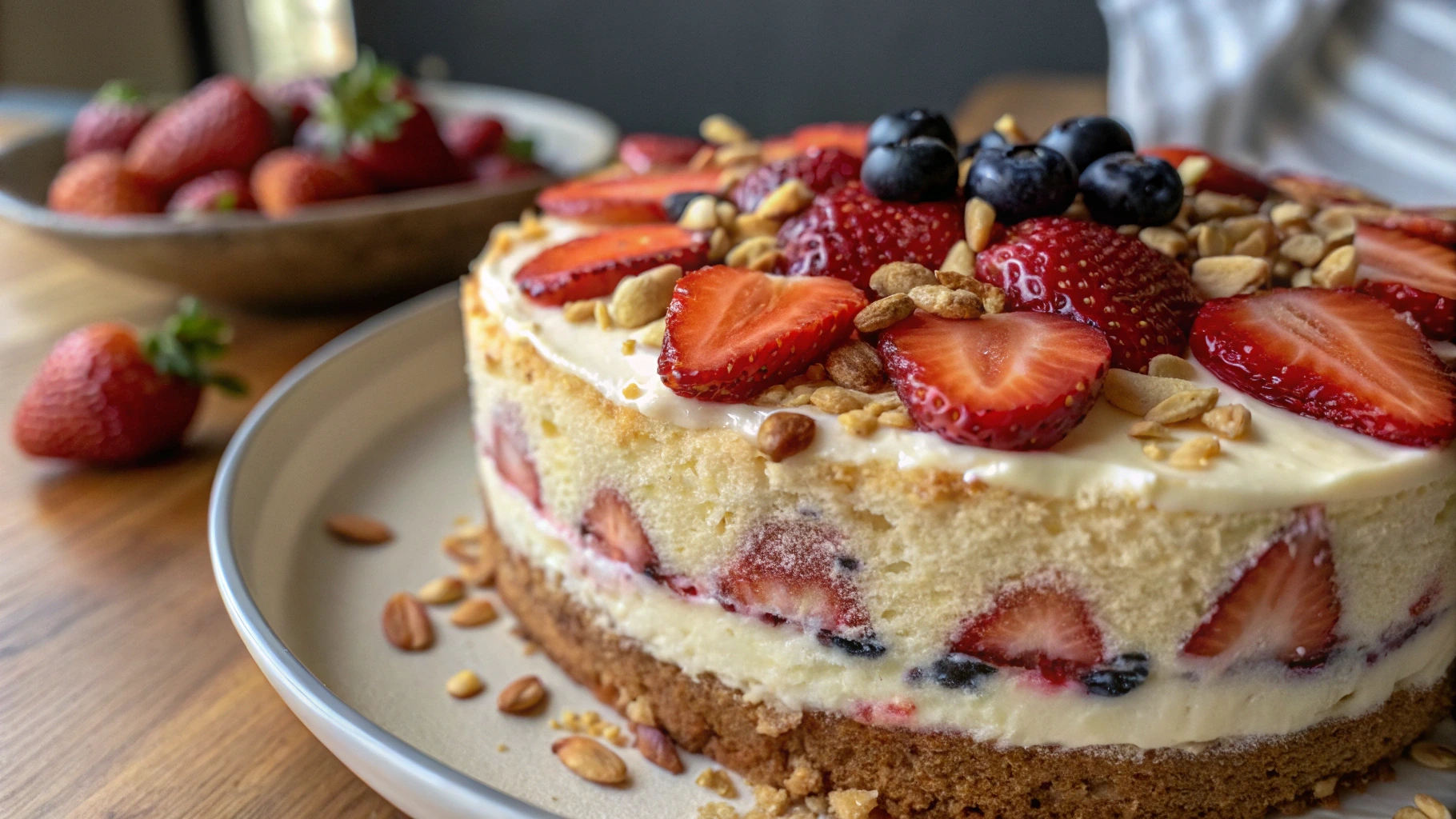Baking has a magical way of bringing people together, creating memories that last a lifetime. The aroma of a freshly baked cake wafting through your home can evoke feelings of warmth and nostalgia, reminding you of special occasions and family gatherings. But what happens when you find yourself without cake mix? Instead of feeling frustrated, this can be a chance to explore the world of baking from scratch.
Imagine the satisfaction of creating a delicious cake using ingredients you already have in your pantry. You can customize flavors, textures, and even cater to dietary needs, all while embracing your creativity in the kitchen. Whether you’re looking to whip up a quick dessert for an unexpected guest or want to experiment with healthier options, knowing how to substitute for cake mix opens up a realm of possibilities.
In this guide, you will discover various alternatives to cake mix, from homemade recipes to using other baking mixes and creative ingredients. You’ll learn how to make delightful cakes that not only taste amazing but also reflect your personal touch. So, roll up your sleeves and get ready to embark on a baking adventure that turns simple ingredients into extraordinary treats!
Understanding Cake Mix and Its Purpose
What Is Cake Mix?
Cake mix is a convenient blend of dry ingredients designed to simplify the baking process. Typically, it contains flour, sugar, leavening agents, and sometimes flavorings or stabilizers. This pre-measured combination allows you to quickly whip up a cake with minimal effort, making it a popular choice for both novice and experienced bakers.
While cake mix offers convenience, it can limit creativity and customization. Understanding the components of cake mix empowers you to recreate it from scratch, allowing you to adjust flavors, sweetness, and dietary requirements. For example, you might wonder if pancake mix can serve as a substitute for cake mix. To explore this topic further, check out this link. By knowing what goes into cake mix, you can take control of your baking and create delicious cakes tailored to your preferences.
Why You Might Need Alternatives
There are several reasons you might seek alternatives to cake mix, each reflecting your unique baking needs.
- Dietary Restrictions: Many people have specific dietary requirements, whether due to allergies, intolerances, or lifestyle choices. Gluten-free, vegan, or low-sugar diets may necessitate different ingredients to ensure everyone can enjoy a delicious cake.
- Missing Ingredients: Sometimes, you may find yourself in the kitchen ready to bake, only to discover that you’re out of cake mix or key ingredients. In such cases, knowing how to improvise with what you have on hand can save the day and prevent disappointment.
- Desire for Freshness: Homemade cakes often taste fresher and more flavorful than those made from a mix. By using fresh ingredients, you can not only enhance the taste but also incorporate seasonal fruits and flavors that reflect your personal style. For more insights on ingredient differences, check out this link. Embracing alternatives allows you to bake with intention and creativity.
Common Substitutes for Cake Mix

Homemade Cake Mix Recipe
Creating your own cake mix at home is easier than you might think. This way, you control the ingredients and can adjust for dietary needs.
Ingredients Table
| Ingredient | Amount |
|---|---|
| All-purpose flour | 2 cups |
| Sugar | 1 ½ cups |
| Baking powder | 1 tablespoon |
| Salt | ½ teaspoon |
| Optional: Cocoa powder for chocolate cake |
Key Points
- Mixing: In a large bowl, combine the flour, sugar, baking powder, and salt. If you’re making a chocolate cake, add the cocoa powder. Whisk all the ingredients together until they are well blended.
- Storage: Transfer the mixture into an airtight container. This homemade cake mix can be stored in a cool, dry place for up to three months, making it a convenient option for last-minute baking.
- Usage: To use your homemade mix, simply add the necessary wet ingredients, such as eggs, milk, and oil, according to your recipe. This flexibility allows you to experiment with different flavors and textures, ensuring that each cake you bake is uniquely yours. Enjoy the satisfaction of baking from scratch!
Using Pancake Mix as an Alternative

Pancake mix is a surprisingly versatile ingredient that can serve as an effective substitute for cake mix in a pinch. With a few adjustments, you can create a delicious cake that rivals those made from traditional cake mix.
Key Points
- Basic Composition: Pancake mix typically contains flour, baking powder, sugar, and salt, which are similar to the components of cake mix. This makes it a suitable base for cakes, especially when you’re short on time or ingredients.
- Adjusting Sweetness: Since pancake mix is generally less sweet than cake mix, you may need to add extra sugar to achieve the desired sweetness. Start by adding ½ to 1 cup of sugar, depending on your taste preferences.
- Adding Wet Ingredients: Pancake mix often requires the addition of eggs, milk, and oil. For a cake, you might want to use more liquid than you would for pancakes to achieve a lighter, fluffier texture. Aim for a batter consistency similar to traditional cake batter.
- Baking Time: Keep an eye on your cake as it bakes, as it may require different baking times compared to a cake made from a standard mix. Use the toothpick test to check for doneness.
By using pancake mix creatively, you can whip up a delightful cake with minimal effort!
Other Baking Mixes
When you’re in the kitchen and find yourself without cake mix, there are several alternatives you can turn to. Here’s a list of other baking mixes that can help you create delicious cakes and desserts, along with key points for each.
List of Alternatives
- Brownie Mix
- Key Points: Brownie mix can easily be adapted to create a rich chocolate cake. Simply follow the mix instructions, but add extra baking powder for a lighter texture. You can also incorporate additional ingredients like nuts or chocolate chips for added flavor.
- Muffin Mix
- Key Points: Muffin mix is versatile and can be transformed into a cake by adjusting the liquid ingredients. Increase the amount of milk or eggs to achieve a batter consistency similar to cake batter. Muffin mixes often contain fruit flavors, which can add a unique twist to your cake.
- Cookie Mix
- Key Points: Cookie mix can be used to create a cookie cake. Just prepare the mix according to the package directions, but spread it in a cake pan instead of baking it as cookies. This results in a chewy, delicious cake that can be frosted and served like a traditional cake.
- Pancake Mix
- Key Points: As mentioned earlier, pancake mix can be a great substitute for cake mix. Adjust the sugar and liquid content to achieve the right sweetness and texture. Pancake mix cakes tend to be fluffy and light, making them a delightful option.
- Cornbread Mix
- Key Points: Cornbread mix can be used to create a unique, slightly sweet cake. The texture will be denser than traditional cakes, but the flavor is delightful. Add honey or maple syrup to enhance the sweetness and moisture.
- Scone Mix
- Key Points: Scone mix can be adapted to make a cake with a crumbly texture. Simply add more liquid to create a batter and bake in a cake pan. This results in a cake that pairs beautifully with clotted cream or fresh fruit.
- Bisquick Mix
- Key Points: Bisquick is a versatile baking mix that can be used for pancakes, biscuits, and cakes. By adding sugar and eggs, you can create a simple cake batter. This mix is particularly useful for quick and easy recipes.
Creative Ingredients to Enhance Your Cake
Fruits and Vegetables
Incorporating fruits and vegetables into your cake can add moisture and flavor.
Key Points
- Mashed Bananas: Great for adding sweetness and moisture.
- Applesauce: A fantastic egg substitute that also enhances texture.
- Pureed Vegetables: Carrots or zucchini can make your cake moist while adding nutritional value.
Yogurt and Sour Cream
These dairy products can replace eggs or oil, contributing to a tender crumb.
Key Points
- Benefits: Both yogurt and sour cream add moisture and tanginess, making your cake more flavorful.
- Substitution: Use about ½ cup of yogurt or sour cream for every egg you replace.
Tips for Baking Without Cake Mix
Measuring Ingredients Accurately
Precision is key in baking. Accurate measurements can make the difference between a light, fluffy cake and a dense, heavy one.
Key Points
- Use a Kitchen Scale: Weighing ingredients can ensure consistency.
- Level Off Dry Ingredients: Use a straight edge to level off flour and sugar for accuracy.
Adjusting Baking Times and Temperatures
Different ingredients can affect how your cake bakes.
Key Points
- Keep an Eye on Baking: Cakes made from scratch may bake faster or slower than those made with cake mix.
- Use a Toothpick Test: Insert a toothpick into the center; if it comes out clean, your cake is done.
Frequently Asked Questions (FAQs)
Q: What can I use instead of cake mix for a gluten-free cake?
You can use gluten-free flour blends or almond flour. Just ensure you add a binding agent like xanthan gum for structure.
Q: Can I use brownie mix instead of cake mix?
Yes! Brownie mix can be used, but you may want to add extra eggs or liquid to achieve a lighter texture.
Q: What are some easy cake recipes without cake mix?
Consider a simple vanilla or chocolate cake using the homemade cake mix recipe provided earlier. Another option is a fruit-based cake like banana bread.
Q: How do I make a cake without eggs using cake mix alternatives?
You can substitute eggs with flaxseed meal (1 tablespoon mixed with 2.5 tablespoons of water per egg) or applesauce (¼ cup per egg).
Q: Is it possible to make a cake with just flour and sugar?
While flour and sugar are essential, you’ll also need leavening agents (like baking powder), fat (like butter or oil), and liquid (like milk) to create a cake.
Q: What can I use instead of cake mix for a vegan cake?
Try using a combination of flour, sugar, baking powder, and plant-based milk. You can also substitute eggs with flaxseed meal or applesauce.
Conclusion
Knowing what you can use instead of cake mix opens up a world of baking possibilities. Whether you choose to create your own mix or substitute with other baking products, you’ll find that the process of baking from scratch can be incredibly rewarding. So gather your ingredients, unleash your creativity, and enjoy the sweet rewards of your efforts.
Call to Action
Have you tried any of these alternatives? Share your experiences or favorite recipes in the comments below! Your insights could inspire others to embark on their own baking adventures. Happy baking!

